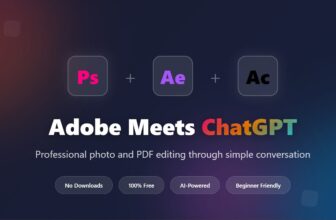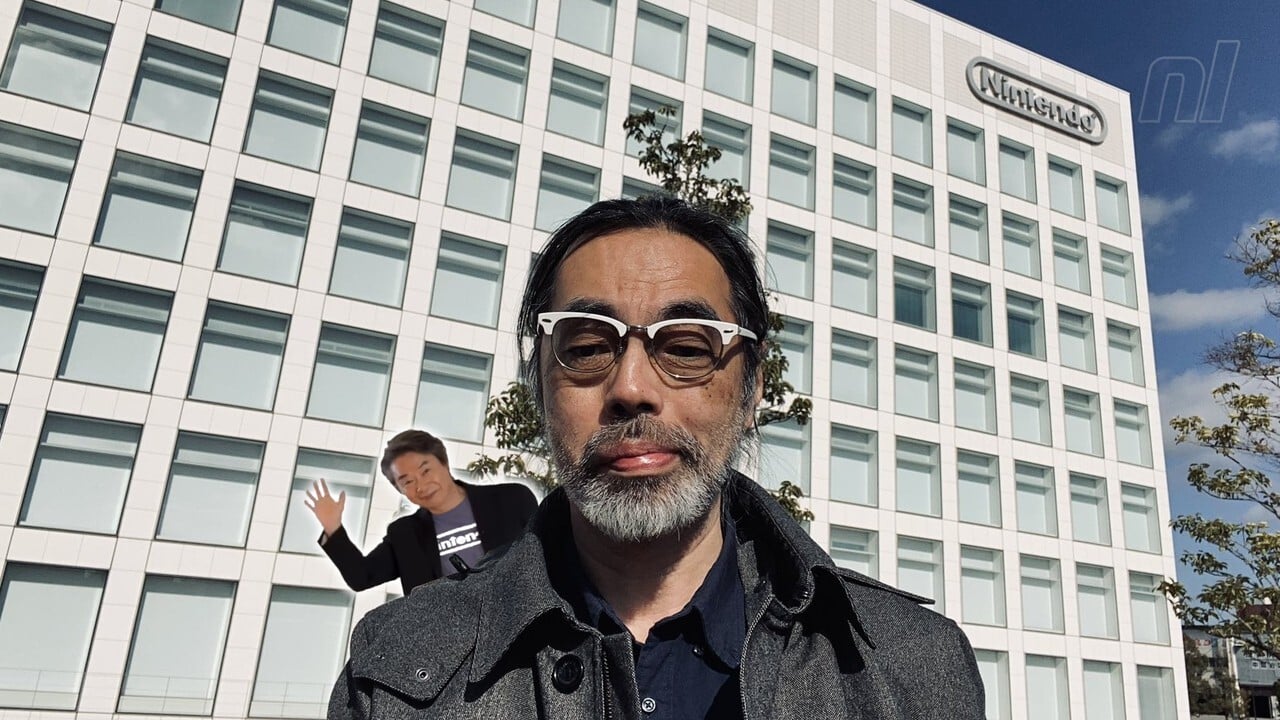
There’s no question that Nintendo makes some of the best video games in the world thanks to its incredibly skilled and passionate in-house and partner developers. But how often does the company let those developers speak freely about the games they make?
Last year we got the opportunity to chat with the legendary artist Takaya Imamura, famous for Star Fox, Captain Falcon and the many machines in F-Zero, and even Majora’s Mask itself. He was with Nintendo for over 30 years working on countless games until leaving the company in 2021 to pursue something different. So, naturally, we said ‘Yes!’ and flew thousands of miles to sit down with the man himself.
Imamura-san is now coming back to gaming with his new project OMEGA 6: The Triangle Stars, an adventure inspired by his own manga. In this interview, we speak about the upcoming game, his days working on games like Zelda, and why he left Nintendo after all those years…
Nintendo Life (Zion Grassl): Omega 6 looks a lot like a long-lost Super Famicom game. How long have you had the idea for this game in your head?
Takaya Imamura: So it’s actually pretty new as a concept. It’s derived from the manga. The idea wasn’t there from the beginning. I wrote the manga, then the chance to create a game based on it came up.
In that regard, what do you love about working outside of Nintendo and how is developing a game different now for you?
Now I enjoy it. I’m happy.
Did we hear correctly that you’re a professor as well? How do you juggle all of that?
Simply put, as a professor I’m teaching students, they come to class at a certain time, there’s summer holidays and I know when I need to work and when I don’t. Like Indiana Jones. [makes whip-cracking sound]
Are you a big Indiana Jones fan?
Yea, yeah!
Are you going to play The Great Circle when that comes out?
Ahh, of course!
What has it been like being a teacher and a famous game developer? Do you have students that know of and are fans of your work?
There are some like that, but the majority don’t really know who I am.
Wow! That’s so interesting! I feel if you were a teacher in the US or the UK people would react differently to you being their teacher.
Even students who really look up to me tend to hold back during class. It’s when we go out for a meal or drinks then they ask if I’ll sign or draw something!
It’s nice that there’s a time and place for that sort of thing. To get back to Omega 6, what was your biggest inspiration for the art direction?
Once I left Nintendo, I was thinking, ‘How can I do something on my own as a creative?’ The easiest and first thing that came to mind was to make a comic since I can draw. I really wasn’t thinking of how I could sell the comic and make money, I just really wanted to draw this comic. If I can put it digitally on Kindle and a few people buy it? Great!
The game itself has a massive roster of characters, and I love how there’s a list of them all that you can flip through. Are you sharing design duties with anyone else or are they all created by you?
Thank you! Basically it was all me except there are four characters in there that my students designed. I did the pixel art for those few characters but my students came up with the original designs.
That’s amazing! You directed Steel Diver and have worked on plenty of other games with Nintendo over your many years there, but when’s the last time you’ve gotten to express yourself in this way?
It’s the first time I’ve been this free, because there’s nobody to tell me ‘No’, or to tell me when to stop. I just do what I want as much as I want.
When I was at Nintendo, or when you’re doing something in a professional environment and the project has milestones that people have to check off, you get senior people like the producers and managers that say, “Alright, you need to reel this one in,” or, “Let’s not do this.” Ya know, I really never liked that. I think for pretty much anybody who is a professional game developer, this is something they’ll go through. Of course, you know, when you’re at a company, the company has to make money!
Do you remember what it was that made you want to leave Nintendo? You’d been there for many years, but it’s a dream for many to work there.
It’s actually pretty simple. I quit when I was 65. This is the same for anybody, but life is short. We’ve only got a number of years on this earth and there’s a limit to the amount of things you can do with that time. I was kind of mulling over that and at the same time I got an invitation from the university to come and teach and I thought, ‘Whoa, this is an opportunity to change things.’
This was three or four years ago, right?
I left in 2021!
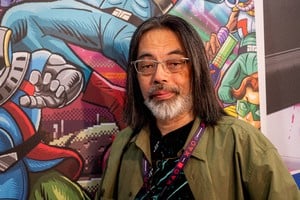
What are a few things you miss working at Nintendo?
For the first six months or so after leaving Nintendo, I kept dreaming I was still going to work. I’d start developing a game and then I’d wake up and go, “Oh, oh. Okay that’s weird.”
I actually met with Shigeru Miyamoto once after I left and I said, “Hey, long time no see!” But I actually didn’t feel like that was true since I was seeing him in my dreams all the time. He got a good laugh out of that.
You were at Nintendo for such a long time, so were you pretty close with a lot of your colleagues?
Yeah, I still keep in contact with all of them. For example, the director of Animal Crossing, Aya Kyogoku, is coming out to see me teach in the classroom in October.
Wow, really?! Is she going to be speaking or just sitting in to observe?
She’s just coming over for a chat! If I have her give a lecture or something like that, then she’s gotta ask Nintendo and it has to be approved.
How does it feel for you to be able to pass on all the things you’ve learned to a newer generation?
It’s very difficult because if I was to host a speech, lots of people would come and listen, I think. When we turn it into a formal lecture, then there’s people who are like, “Ughhh, I don’t wanna be here.” People sleep in class, so it’s like any lecture in school.
So I know you’re very famous for creating Tingle – was there anything specific that really inspired you to make him?
The background and the lore of the character was decided beforehand and I was only responsible for the visuals. Basically, I found a guy on the team and drew a caricature and there was Tingle!
That seems to be a running theme for you, taking members of your team and putting them in the game! You did this with Star Fox, Falco and Slippy too, yeah?
I’m pretty good at caricatures. With Star Fox, it wasn’t a direct caricature but instead I was taking inspiration from different people. But yeah, that is one of the ways I do it.
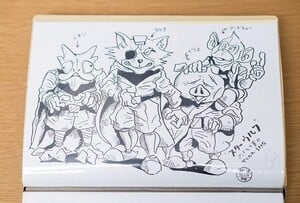
So you’re saying there’s a real-life Tingle roaming around in the world?
Yes.
We know there were a lot of character designs that were carried over from The Legend of Zelda: Ocarina of Time to Majora’s Mask but did you design any other characters in that game?
The only real NPC I made was Tingle, but I designed the Moon and Majora’s Mask and that was kind of iconic. I was the art director, so I wasn’t designing the actual characters, more setting the overall theme and direction for the art.
Do you remember why you were tasked with designing Tingle then? Did someone on the team want you to do it?
It was just a coincidence really. Everyone else was busy so someone asked me, “Hey, could you do this one?” and I said, “Sure!”
Majora’s Mask was developed in a very short amount of time, which sounds like it could be really stressful, but when you think back to that time making that game, is there anything that stands out? A funny moment, maybe the way you bonded with a coworker, or a way you made yourself proud?
It was a really short project compared to general Nintendo timelines, so everybody was really focused on getting it done. So there really wasn’t much room for fun, games, and hijinx. But, near the end of development, I had a homepage at the time and I was drawing caricatures on it just for fun and a TV company got in contact. There’s a program in Japan where they get people on and they compete by drawing caricatures and they’re judged and everything, and I got invited to go on that!
And I thought, ‘Huh, okay!’ It’s a pretty famous program in Japan, so I thought I’d ask Nintendo and they said, “Yeah go ahead, why not!” Nintendo said okay, but I was planning to go on without making a big deal about the fact I worked for Nintendo. Then I heard the date the program was going to go live, and it was the release date for Majora’s Mask in Japan!
So I thought, ‘Well, in that case, I’ll go on and say who I was!’ Then the program ended up coming down to the studio and filmed us developing the game a little bit, and there was me at my desk drawing some pictures. It was such a happy coincidence.
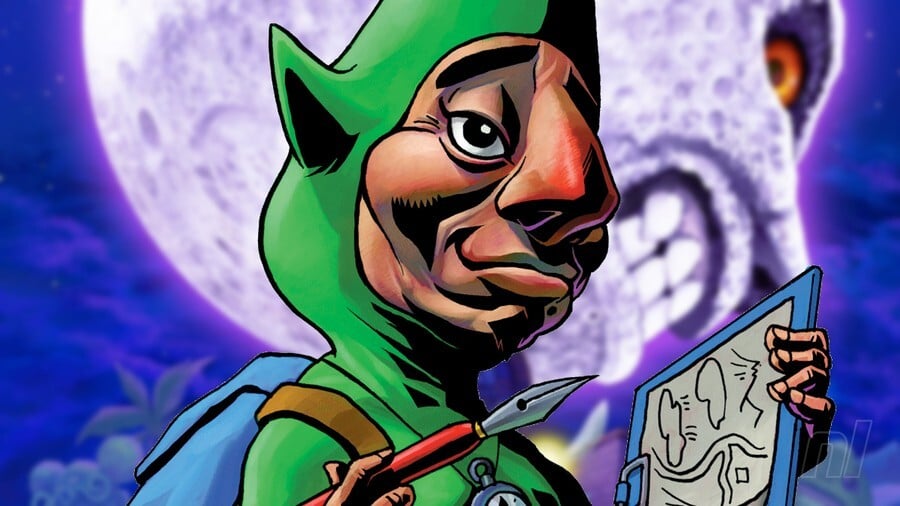
Do you know if that is available online to watch?
I haven’t been able to find it actually.
Oh really?! I would personally do so much to see that!
The program was called TV Champion. *picks up phone and starts looking* It’s a knockout competition and I made it through to the final!
By the way, are you a fan of Tingle?
*shrugs and shakes head*
[Laughs] I know there was a fan campaign to get rid of Tingle at one point, much like Jar Jar Binks in Star Wars!
I was quite young when the game came out, I think I played it when I was eight. I remember wanting to be Link when I was a kid, so when I saw Tingle, I was like, “Oooo, who is this guy?” He doesn’t fit in the suit, flying around on balloons, letting out a funny scream when you shoot him down. I’ve grown to love him now, but as a kid I always wanted to be the ‘cool guy.’
This interview has been edited for clarity and to remove some details at the request of the interviewee.
Many thanks to Mr Imamura for speaking with us. Omega 6: The Triangle Stars launches for Switch in the West on 28th February. Dark Horse Comics has also announced that the Omega 6 manga will be available in English in October this year.
There’s no question that Nintendo makes some of the best video games in the world thanks to its incredibly skilled and passionate in-house and partner developers. But how often does the company let those developers speak freely about the games they make?
Last year we got the opportunity to chat with the legendary artist Takaya Imamura, famous for Star Fox, Captain Falcon and the many machines in F-Zero, and even Majora’s Mask itself. He was with Nintendo for over 30 years working on countless games until leaving the company in 2021 to pursue something different. So, naturally, we said 'Yes!' and flew thousands of miles to sit down with the man himself.
Imamura-san is now coming back to gaming with his new project OMEGA 6: The Triangle Stars, an adventure inspired by his own manga. In this interview, we speak about the upcoming game, his days working on games like Zelda, and why he left Nintendo after all those years...
Nintendo Life (Zion Grassl): Omega 6 looks a lot like a long-lost Super Famicom game. How long have you had the idea for this game in your head?
Takaya Imamura: So it’s actually pretty new as a concept. It’s derived from the manga. The idea wasn’t there from the beginning. I wrote the manga, then the chance to create a game based on it came up.
In that regard, what do you love about working outside of Nintendo and how is developing a game different now for you?
Now I enjoy it. I’m happy.
Did we hear correctly that you’re a professor as well? How do you juggle all of that?
Simply put, as a professor I’m teaching students, they come to class at a certain time, there’s summer holidays and I know when I need to work and when I don’t. Like Indiana Jones. [makes whip-cracking sound]
Are you a big Indiana Jones fan?
Yea, yeah!
Are you going to play The Great Circle when that comes out?
Ahh, of course!
What has it been like being a teacher and a famous game developer? Do you have students that know of and are fans of your work?
There are some like that, but the majority don’t really know who I am.
Wow! That’s so interesting! I feel if you were a teacher in the US or the UK people would react differently to you being their teacher.
Even students who really look up to me tend to hold back during class. It’s when we go out for a meal or drinks then they ask if I’ll sign or draw something!
It’s nice that there’s a time and place for that sort of thing. To get back to Omega 6, what was your biggest inspiration for the art direction?
Once I left Nintendo, I was thinking, 'How can I do something on my own as a creative?' The easiest and first thing that came to mind was to make a comic since I can draw. I really wasn’t thinking of how I could sell the comic and make money, I just really wanted to draw this comic. If I can put it digitally on Kindle and a few people buy it? Great!
The game itself has a massive roster of characters, and I love how there’s a list of them all that you can flip through. Are you sharing design duties with anyone else or are they all created by you?
Thank you! Basically it was all me except there are four characters in there that my students designed. I did the pixel art for those few characters but my students came up with the original designs.
That’s amazing! You directed Steel Diver and have worked on plenty of other games with Nintendo over your many years there, but when’s the last time you’ve gotten to express yourself in this way?
It’s the first time I’ve been this free, because there’s nobody to tell me 'No', or to tell me when to stop. I just do what I want as much as I want.
When I was at Nintendo, or when you’re doing something in a professional environment and the project has milestones that people have to check off, you get senior people like the producers and managers that say, “Alright, you need to reel this one in,” or, “Let's not do this.” Ya know, I really never liked that. I think for pretty much anybody who is a professional game developer, this is something they’ll go through. Of course, you know, when you’re at a company, the company has to make money!
Do you remember what it was that made you want to leave Nintendo? You’d been there for many years, but it’s a dream for many to work there.
It’s actually pretty simple. I quit when I was 65. This is the same for anybody, but life is short. We’ve only got a number of years on this earth and there’s a limit to the amount of things you can do with that time. I was kind of mulling over that and at the same time I got an invitation from the university to come and teach and I thought, 'Whoa, this is an opportunity to change things.'
This was three or four years ago, right?
I left in 2021!

What are a few things you miss working at Nintendo?
For the first six months or so after leaving Nintendo, I kept dreaming I was still going to work. I’d start developing a game and then I’d wake up and go, “Oh, oh. Okay that’s weird.”
I actually met with Shigeru Miyamoto once after I left and I said, “Hey, long time no see!” But I actually didn’t feel like that was true since I was seeing him in my dreams all the time. He got a good laugh out of that.
You were at Nintendo for such a long time, so were you pretty close with a lot of your colleagues?
Yeah, I still keep in contact with all of them. For example, the director of Animal Crossing, Aya Kyogoku, is coming out to see me teach in the classroom in October.
Wow, really?! Is she going to be speaking or just sitting in to observe?
She’s just coming over for a chat! If I have her give a lecture or something like that, then she’s gotta ask Nintendo and it has to be approved.
How does it feel for you to be able to pass on all the things you’ve learned to a newer generation?
It’s very difficult because if I was to host a speech, lots of people would come and listen, I think. When we turn it into a formal lecture, then there’s people who are like, “Ughhh, I don’t wanna be here.” People sleep in class, so it’s like any lecture in school.
So I know you’re very famous for creating Tingle - was there anything specific that really inspired you to make him?
The background and the lore of the character was decided beforehand and I was only responsible for the visuals. Basically, I found a guy on the team and drew a caricature and there was Tingle!
That seems to be a running theme for you, taking members of your team and putting them in the game! You did this with Star Fox, Falco and Slippy too, yeah?
I’m pretty good at caricatures. With Star Fox, it wasn’t a direct caricature but instead I was taking inspiration from different people. But yeah, that is one of the ways I do it.

So you’re saying there’s a real-life Tingle roaming around in the world?
Yes.
We know there were a lot of character designs that were carried over from The Legend of Zelda: Ocarina of Time to Majora’s Mask but did you design any other characters in that game?
The only real NPC I made was Tingle, but I designed the Moon and Majora’s Mask and that was kind of iconic. I was the art director, so I wasn’t designing the actual characters, more setting the overall theme and direction for the art.
Do you remember why you were tasked with designing Tingle then? Did someone on the team want you to do it?
It was just a coincidence really. Everyone else was busy so someone asked me, “Hey, could you do this one?” and I said, "Sure!"
Majora’s Mask was developed in a very short amount of time, which sounds like it could be really stressful, but when you think back to that time making that game, is there anything that stands out? A funny moment, maybe the way you bonded with a coworker, or a way you made yourself proud?
It was a really short project compared to general Nintendo timelines, so everybody was really focused on getting it done. So there really wasn’t much room for fun, games, and hijinx. But, near the end of development, I had a homepage at the time and I was drawing caricatures on it just for fun and a TV company got in contact. There’s a program in Japan where they get people on and they compete by drawing caricatures and they’re judged and everything, and I got invited to go on that!
And I thought, 'Huh, okay!' It’s a pretty famous program in Japan, so I thought I’d ask Nintendo and they said, “Yeah go ahead, why not!” Nintendo said okay, but I was planning to go on without making a big deal about the fact I worked for Nintendo. Then I heard the date the program was going to go live, and it was the release date for Majora’s Mask in Japan!
So I thought, 'Well, in that case, I’ll go on and say who I was!' Then the program ended up coming down to the studio and filmed us developing the game a little bit, and there was me at my desk drawing some pictures. It was such a happy coincidence.

Do you know if that is available online to watch?
I haven’t been able to find it actually.
Oh really?! I would personally do so much to see that!
The program was called TV Champion. *picks up phone and starts looking* It’s a knockout competition and I made it through to the final!
By the way, are you a fan of Tingle?
*shrugs and shakes head*
[Laughs] I know there was a fan campaign to get rid of Tingle at one point, much like Jar Jar Binks in Star Wars!
I was quite young when the game came out, I think I played it when I was eight. I remember wanting to be Link when I was a kid, so when I saw Tingle, I was like, “Oooo, who is this guy?” He doesn’t fit in the suit, flying around on balloons, letting out a funny scream when you shoot him down. I’ve grown to love him now, but as a kid I always wanted to be the 'cool guy.'
This interview has been edited for clarity and to remove some details at the request of the interviewee.
Many thanks to Mr Imamura for speaking with us. Omega 6: The Triangle Stars launches for Switch in the West on 28th February. Dark Horse Comics has also announced that the Omega 6 manga will be available in English in October this year.



